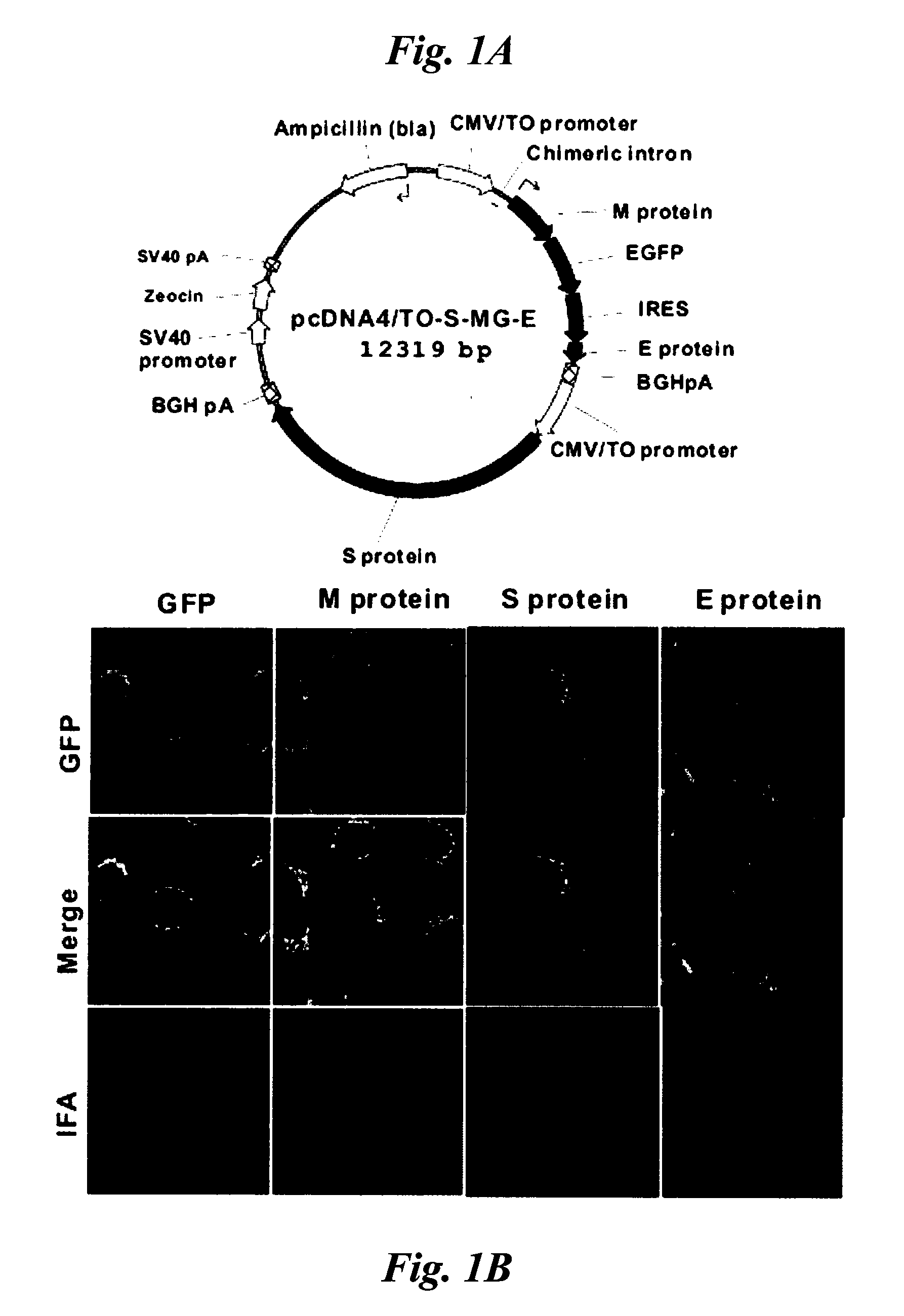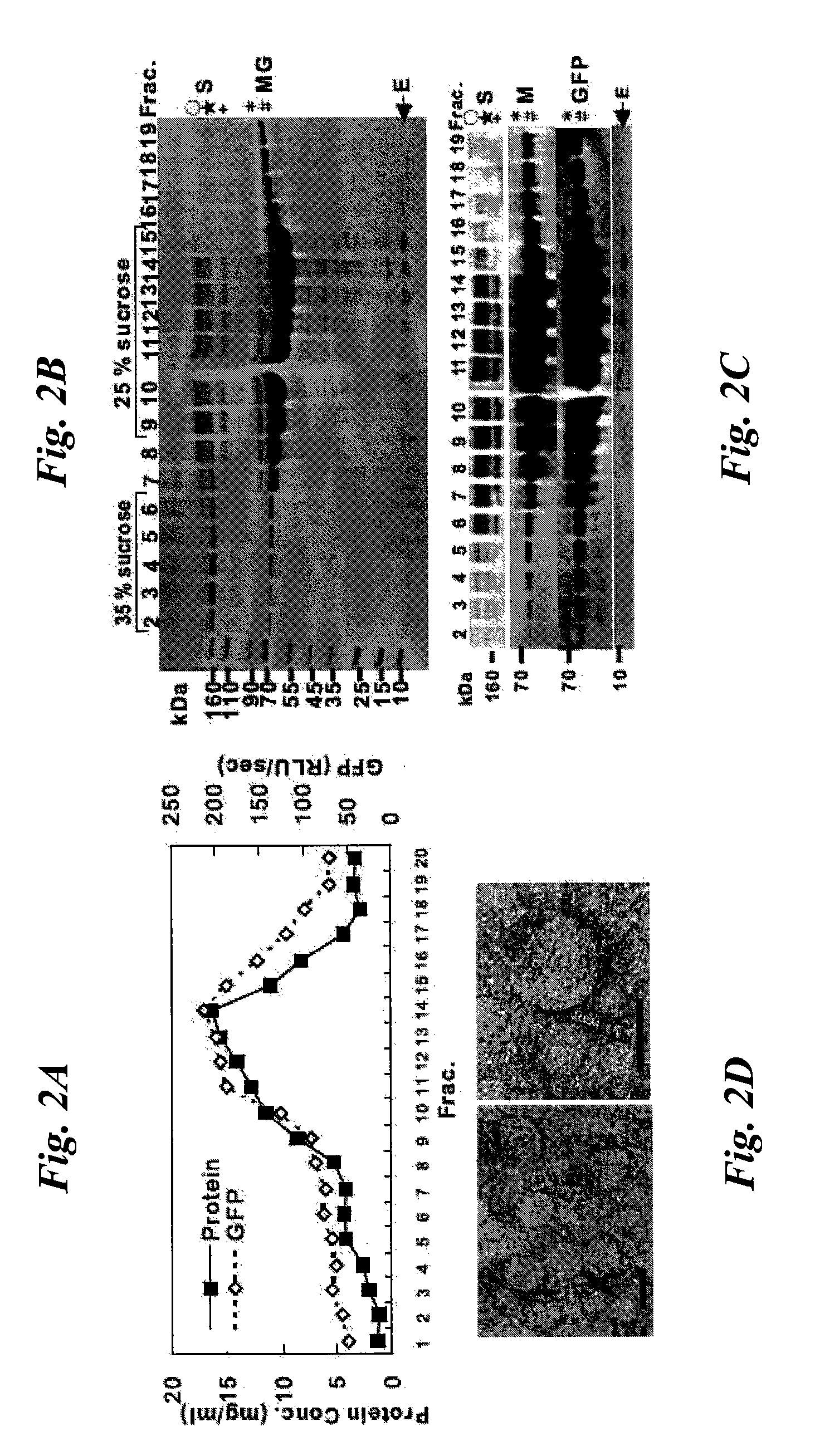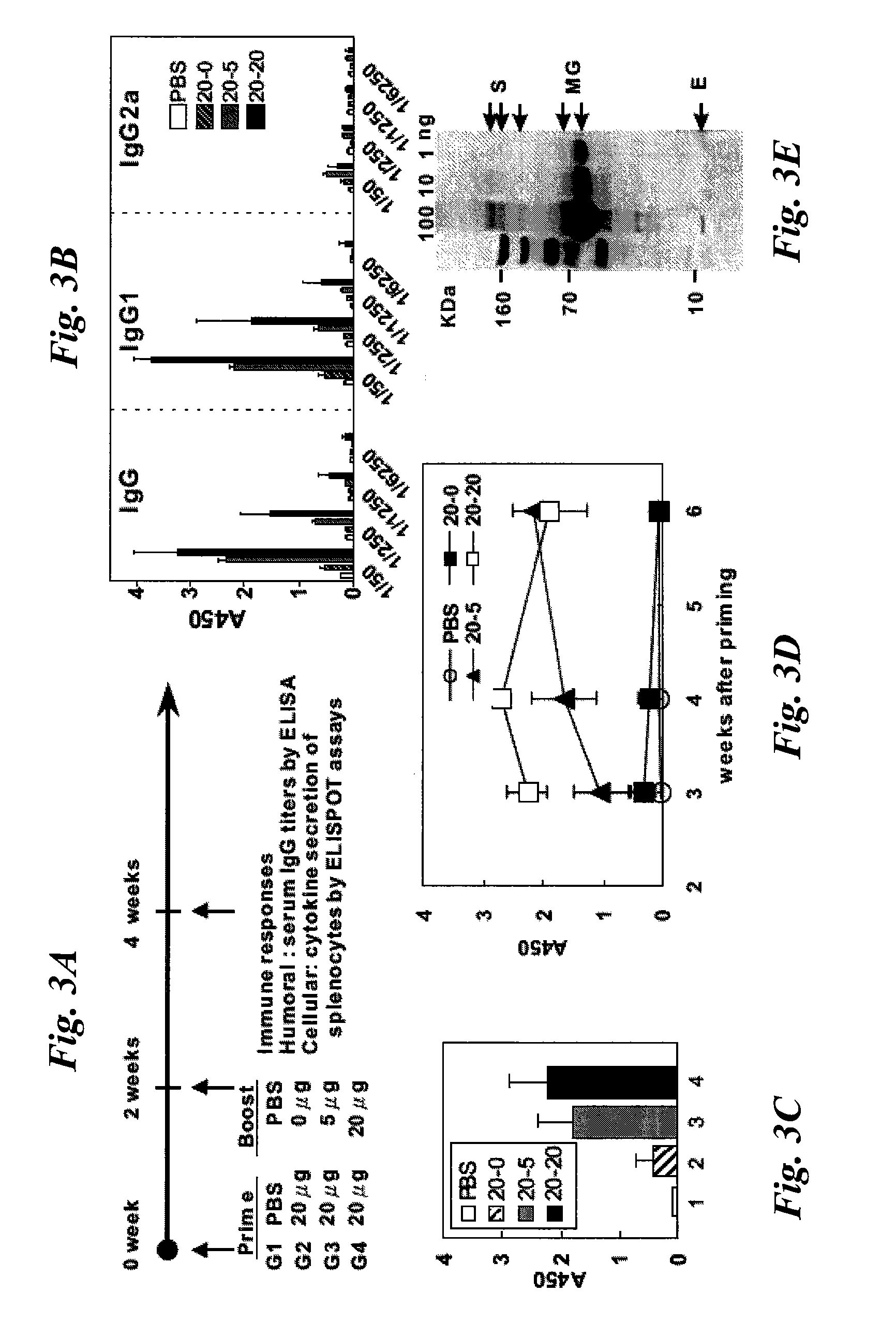High-yield Transgenic Mammalian Expression System for Generating Virus-like Particles
a technology of virus-like particles and expression systems, applied in the field of high-yield transgenic mammalian expression systems, can solve the problems of reversion or recombination of live-attenuated viruses with circulating wild type into virulent strains, and the risk of viral escape from vaccines based on whole viruses, so as to stimulate the immune response and high immunogenicity
- Summary
- Abstract
- Description
- Claims
- Application Information
AI Technical Summary
Benefits of technology
Problems solved by technology
Method used
Image
Examples
example 1
Expression and Assembly of SARS-VLPs
[0207]Cell Lines and Plasmids
[0208]Vero E6 cells were obtained from American Type Culture Collection (ATCC No. CRL-1586™) and routinely cultured in MEM medium supplemented with 10% fetal bovine serum. Vero E6-based tetracycline-inducible founder cells, Vero / TR, were derived by a stable transfection with the pcDNA6 / TR plasmid (Invitrogen). Inducible M-GFP and E expression cassettes were constructed by PCR linking consecutively a β-globin / IgG chimeric intron (from pCI vector, Promega), M-GFP coding sequence, an internal ribosome entry site (IRES) from the encephalomyocarditis virus (ECMV), and an E coding sequence, and the construct was then inserted into the backbone of the pcDNA4 / TO plasmid (Invitrogen). Inducible S expression cassette was constructed by inserting a cDNA of the S protein of TW1 strain into the pcDNA5 / TO plasmid (Invitrogen). Subsequently, the entire S expression cassette was inserted into the expression plasmid for M-GFP and E to ...
example 2
Purification and Characterization of SARS VLPs
[0216]Purification of VLP was initially performed by concentrating conditioned culture medium of the induced cells on a 45% sucrose cushion by ultracentrifugation at 200,000×g at 4° C. for 2 hrs. The interface was collected and further separated on a step-wise gradient between 25% and 35% sucrose at 200,000×g at 4° C., for 48 hrs. Sedimentation fractions were taken from the bottom of the tube every 0.5 ml volume. Each fraction was analyzed for protein concentration by Coomassie (Bradford) Protein Assay Kit (Pierce) and GFP fluorescence measured by VICTOR2™ fluorometer (PerkinElmer).
[0217]For western blot analysis, polyclonal antibodies against E and M proteins were separately raised in rabbits using E. coli expressed M (a.a. 53-221 of SEQ ID NO: 3) and E (a.a. 1-76 of SEQ ID NO: 4) proteins as antigens by intraspleenic injection. Anti-S polyclonal antibodies were raised in ducks using E. coli expressed S (a.a. 679-888 of SEQ ID NO: 5) as...
example 3
Vaccination Experiments with SARS-VLPs
[0222]With the high-yield SARS-VLP available from mammalian expression as described above, the subsequent important question is its immunogenicity and SARS-CoV-neutralizing antibody response. To address this issue, the inventors designed a series of vaccination experiments in mice and examined the systemic immune responses (FIG. 3A). Groups of four female C57BL / 6 mice, 6-8 weeks of age, were s.c. injected with 20 μg of SARS-VLP in 100 μl of PBS without additional adjuvant, and boosted with different dosages (0, 5 μg, 20 μg) after 2 weeks. Mock immunization mice were injected with 100 μl of PBS as controls.
[0223]Immunization with SARS-VLP Elicits an Antigen-Specific IgG1 Response in Mice.
[0224]Two weeks after booster immunization, serum titers of antigen-specific IgG were measured by ELISA using native SARS-VLPs as the absorbent antigen. For ELISA, serum was collected by tail vein bleeding, allowing clotting at 4° C. overnight and cleared up by c...
PUM
| Property | Measurement | Unit |
|---|---|---|
| diameter | aaaaa | aaaaa |
| size | aaaaa | aaaaa |
| size distribution | aaaaa | aaaaa |
Abstract
Description
Claims
Application Information
 Login to View More
Login to View More - R&D
- Intellectual Property
- Life Sciences
- Materials
- Tech Scout
- Unparalleled Data Quality
- Higher Quality Content
- 60% Fewer Hallucinations
Browse by: Latest US Patents, China's latest patents, Technical Efficacy Thesaurus, Application Domain, Technology Topic, Popular Technical Reports.
© 2025 PatSnap. All rights reserved.Legal|Privacy policy|Modern Slavery Act Transparency Statement|Sitemap|About US| Contact US: help@patsnap.com



